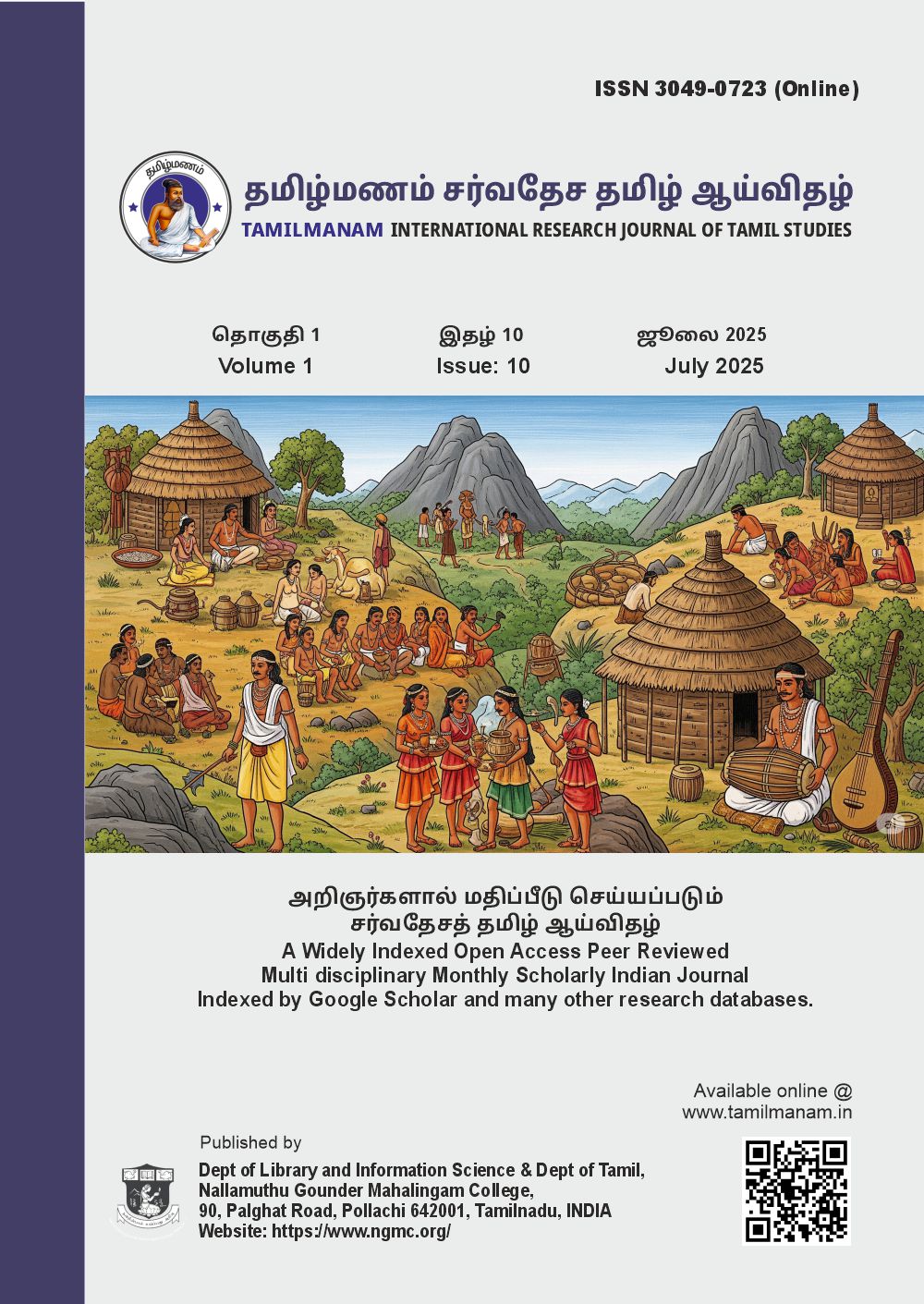Language in Grammar and Language in History
மொழியில் இலக்கணமும் – வரலாற்றில் மொழியும்
DOI:
https://doi.org/10.63300/tm0110202510Keywords:
Language, Grammar, History of Language, TamilAbstract
Language functions as a tool for information exchange and is intricately interwoven with human existence. In society, language is an inseparable part of human beings. It is impossible to view society without language, or language without society. The body of language undergoes changes in some way or another over time. This change should be considered as an advancement in accordance with the times. The structure of language undoubtedly varies from society to society. Although the body of language is generally used by each society, it is accepted by the community in the form of spoken language. A mother tongue, encompassing all regional dialects, can be considered to possess written form as its common characteristic. Here, the written form should be considered a refined version of the spoken form. How this written form is used in language society can be understood from the literary and grammatical texts that arise in each era. This article aims to establish how language has changed and functioned over time, how grammar is used to study language, how language has been historically important, based on the postmodern theory of deconstruction and reconstruction as inherent in language, and how history cannot be viewed without language.
Downloads
References
1. Ilangumaran, Ira. Ilakkaṇa Varalāṟu [History of Grammar]. Maṇivāsakar Patippakam, 1990.
2. Ilavaracu, Soma. Naṉṉūl Eḻuttatiyārām [Nannool Ezhuthathikaram]. Maṇivāsakar Patippakam, n.d.
3. Ilavaracu, Soma. Naṉṉūl Collatiyārām [Nannool Sollathikaram]. Maṇivāsakar Patippakam, n.d.
4. Pālasundaram, Sa. Maṭaimāṟiya Tamiḻilakkaṇa Nūlkaḷ [Redirected Tamil Grammar Books]. Tāmarai Veḷiyīṭṭakam, 1998.
5. Panjankam, Ka. Ilakkiyamum Tiṟaṉāyvuk Kōṭpāṭukaḷum [Literature and Critical Theories]. Aṉṉam Patippakam, 2016.
6. Samuel, G. John. Dirāviṭa Moḻikaḷiṉ Oppāyvu [Comparative Study of Dravidian Languages]. Āciyaviyal Niṟuvaṉam, 1996.
7. Shanmugadas, A. Tamiḻmoḻi Ilakkaṇa Iyalpukaḷ [Grammatical Features of Tamil Language]. Muttamiḻ Veḷiyīṭṭuk Kaḻakam, 1982.
8. Shanmugam, Se. Vai. Ilakkaṇa Uruvākkam [Formation of Grammar]. Adaḷam Patippakam, 2012.
9. Tolkkāppiyam Collatiyārām. Commentary by Sēnāvaraiyar. Tirunelvēli Teṉṉintiya Caiva Cittānta Nūrpatippuk Kaḻakam, Liṭ., 2019.
10. Veḷḷaivāraṇar, Ka. Tolkkāppiya – Naṉṉūl Collatiyārām [Tolkaapiyam – Nannool Collathikaram]. Tamiḻp Palgalaikkazhagam, 1984.
11. Veluppillai, Aa. Tamiḻ Varalāṟṟilakkaṇam [Historical Grammar of Tamil]. Pāri Nilayam, 1966.
Downloads
Published
Issue
Section
License
Copyright (c) 2025 R. Brindha (Author)

This work is licensed under a Creative Commons Attribution 4.0 International License.
Our journal adopts CC BY License Creative Commons Attribution 4.0 International License http://Creativecommons.org//license/by/4.0/ . It allows using, reusing, distributing and reproducing of the original work with proper citation.






